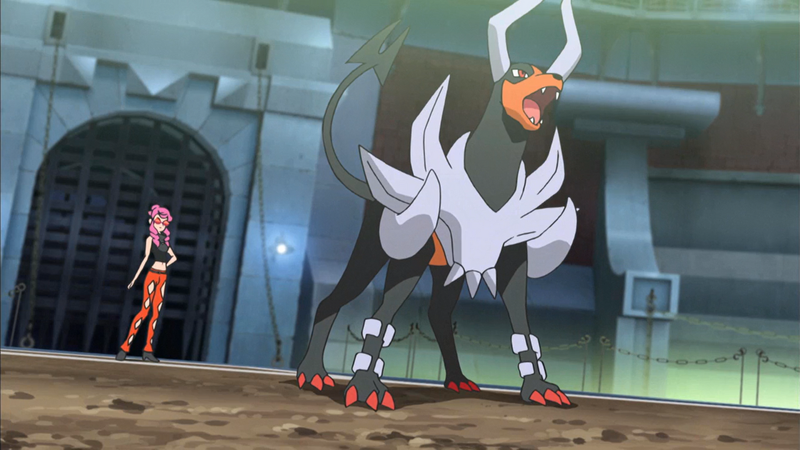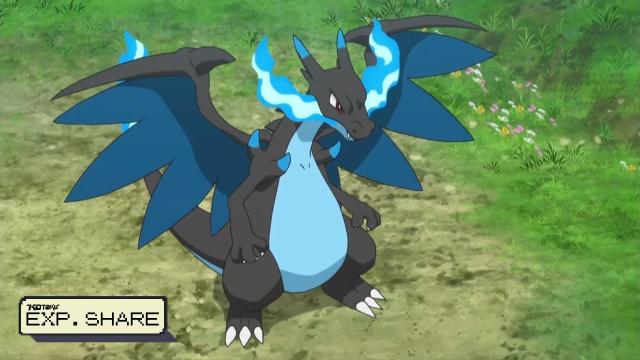We all know Mega Evolution is one of the coolest gimmicks in the Pokémon series. These super-powered transformations debuted in Pokémon X and Y in 2013, and were further expanded in Pokémon Omega Ruby and Alpha Sapphire. Trainers use the power of Mega Stones, which Pokémon hold in battle, to give their ‘mon a power boost, a new, often pretty elaborate form, and sometimes a new typing. Despite its popularity, Mega Evolution hasn’t been in a mainline game since Generation VII. Maybe it’s just my bleeding heart, but I think it’s probably a good thing, not because of any competitive meta or my bitterness that Raichu didn’t get one, but because several of these sick transformations actually hurt the Pokémon who use them.
A subset of the Pokémon fanbase believes the reason Mega Evolutions haven’t appeared in several games is because their existence is actually a divergent point in the Pokémon universe’s timeline. The existence of multiple universes within Pokémon has been a contentious talking point for some time, with evidence from most of the games seemingly implying the existence of at least three continuities, and Mega Evolutions, or their absence, have been a central bullet point for those arguing in favor of the multiverse. They appear in the Ruby and Sapphire remakes, but not the original Game Boy Advance games, implying that there’s some connection to those games and X and Y, as well as the Sun and Moon games, all of which feature these special transformations.
Meanwhile, Sword and Shield did away with the mechanic entirely, and that game is famously meticulous in not referencing characters and events from previous games so it seems like a clean break for the timeline historians. But it does mean that Mega Evolution has mostly appeared in spin-off games like the gacha Pokémon Masters EX and Pokémon Go. This is all much to the chagrin of competitive players who find Mega Evolution an invaluable boon when fighting against others. But y’all, what if we didn’t subject our friends to transformations that cause them pain?

Welcome to Exp. Share, Kotaku’s Pokémon column in which we dive deep to explore notable characters, urban legends, communities, and just plain weird quirks from throughout the Pokémon franchise.
If you read the Pokédex in games with Mega Evolution, you’ll find some additional entries in the digital encyclopedia that tell you a little about these new forms. Sometimes, these dex descriptions illustrate how much power a Pokémon gains by undergoing this transformation. Mega Mawile’s Ultra Moon description, for instance, says the second jaw it grows out of the back of its head is powerful enough to bite through a boulder. Ampharos’ entry, meanwhile, explains its new electric/dragon typing, saying Mega Evolution has awoken long-sleeping dragon genes that manifest in white wool akin to its previous forms Mareep and Flaffy. But then you find some entries that are actually kind of horrifying, because they reveal the Mega Evolution transformation is actively painful for at least some of the Pokémon who use it.
Houndoom is one of my favorite Pokémon, and its Mega form is pretty sick. Its skull collar becomes an armor-like shoulder pad, and its horns grow larger and point upward instead of curving behind its head. Mega Houndoom looks fierce and powerful, but one of the smaller details of its transformation is pretty alarming: Its claws change from the same white, bone-like color of its horns to a dark red unlike anything else in its color palette. According to its Ultra Sun dex entry, this is because of high internal temperatures sparked by the transformation, and these claws actively melt as Houndoom exists in this form. The Pokédex explicitly says this is painful to Houndoom, and yet we didn’t know this detail when the Mega form debuted in Pokémon X and Y. This is just flavor text, as most Pokédex entries are, but it does add a new wrinkle to using the form, knowing you’re hurting your demon doggy by doing so.

Scizor has similar Pokédex entries in Pokémon Sun and Ultra Sun, both of which reference how its Mega Evolution form takes on such an excess of energy that its metallic body will start to melt if it sustains the form for an extended period of time. Sure, it gets major defense boosts and powerful, serrated claws, but no defensive boost can protect it from itself in this form.
While Houndoom and Scizor are at risk of melting from Mega Evolution, other Pokémon experience a brutal, painful rearrangement of their form that the Pokédex acknowledges interferes with their livelihood. Glalie, whose Mega form gives it an ice horn and a gaping maw of a mouth, apparently breaks its jaw to achieve the evolution, according to its Pokémon Sun dex entry. The Ultra Moon Pokédex expands upon this further, revealing that, because of its dislocated jaw, Mega Glalie can’t eat, and is in constant suffering from hunger.
Thankfully, Mega Evolution is a temporary transformation, and Pokémon can change back to their original forms at will. In a way, it feels in keeping with the premise for Mega Evolution to be a significant short-term power boost with some notable drawbacks that make it impossible to sustain outside of battle. But man, reading these dex entries just makes me sad for the Pokémon who take on these forms.
Part of what makes things like Scarlet and Violet’s Tera phenomenon preferable to some people in competitive play is that it’s a universal mechanic any Pokémon can use, and the fact that the same can’t be said of Mega Evolution has always bummed me out. I would’ve loved to have seen my boy Raichu get a Mega form and stand tall alongside others who got to take on those transformations. But the more I read up on the toll Mega Evolution takes on Pokémon, the more I think maybe he lucked out. Competitive meta be damned, I don’t want to hurt my little guys for a boost in damage.

Leave a Reply